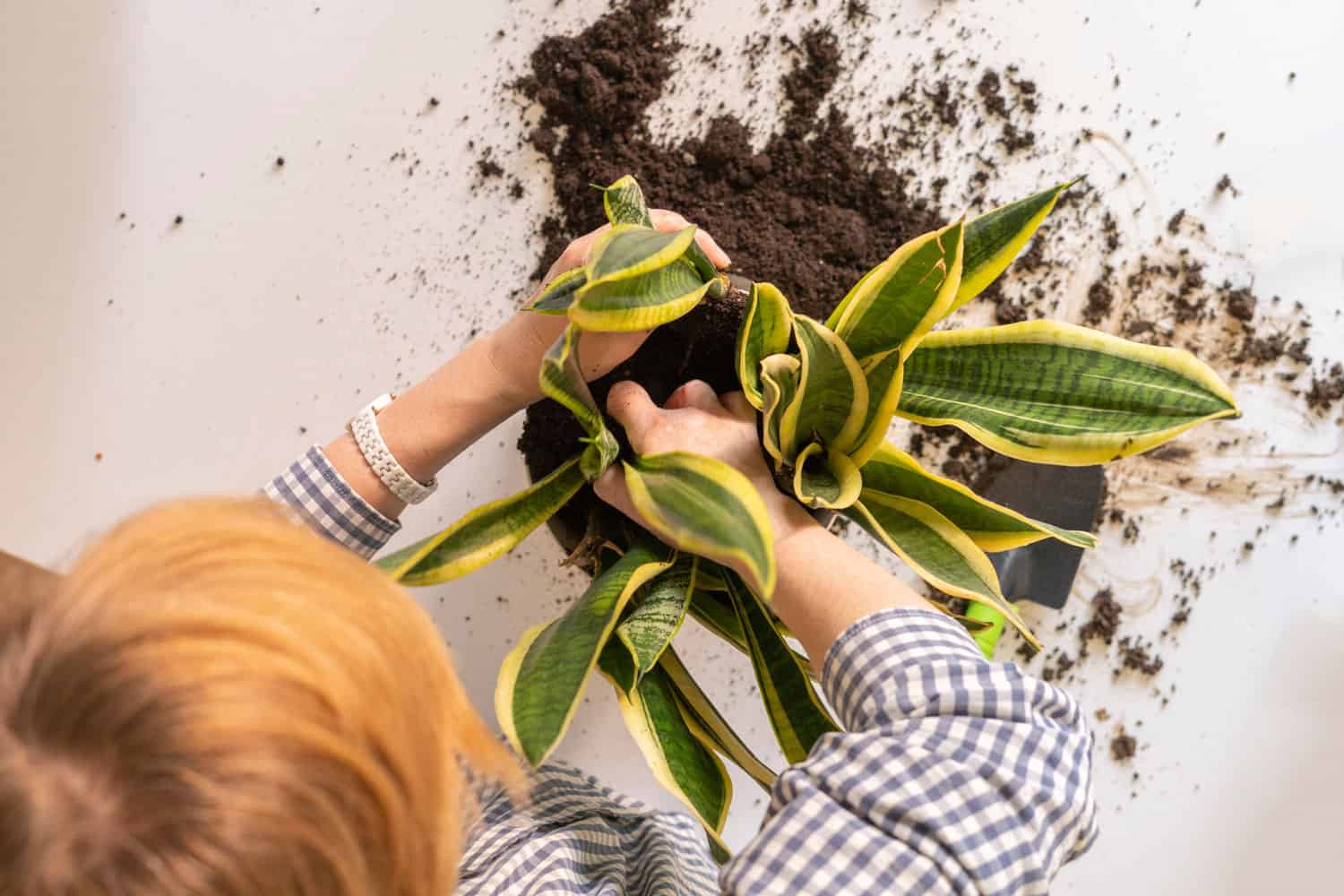Renowned for its striking appearance and air-purifying qualities, the snake plant is a favorite among indoor gardening enthusiasts.
However, like any living organism, it requires proper care to flourish. The cornerstone of this care? Effective drainage.
Understanding proper drainage is crucial for snake plant health, as poor drainage can lead to root rot, oxygen deprivation, and potentially the plant's death.

Several practical and innovative hacks are available to combat these issues and ensure your snake plant thrives.
A basic yet impactful approach is placing a layer of rocks or pebbles at the pot's bottom, creating a reservoir for excess water and protecting the roots from over-saturation.
This article doesn't just stop at these basics; it also introduces five additional creative hacks for you! The goal is to transform your plant care approach, giving your snake plant the best possible care.
Understanding Snake Plant Drainage
As a plant enthusiast, you're likely familiar with the snake plant or Sansevieria, a popular and easy-to-care-for houseplant.
Snake plants do not require frequent watering, and overwatering can lead to root rot, which can be fatal for the plant. Therefore, it is crucial to have proper drainage in the pot to prevent waterlogging.
Explore the more about snake plants in our article: A History: The Background And Native Habitat Of Snake Plants
1. Power of the Right Pot
When improving snake plant drainage, choosing the right pot is super crucial. Here are some factors to consider:
Material Considerations
The material of the pot plays a significant role in the drainage of the snake plant.
Terracotta pots are popular because they allow water to drain from the bottom and absorb moisture and temperature changes. Avoid plastic pots as they can retain water, leading to root rot.
Size and Shape Factors
The size and shape of the pot are also important. Snake plants like to spread their roots, so a deep pot is necessary.
A pot at least 10-12 inches deep and 12-14 inches wide is ideal for a mature snake plant. As a general rule, select a pot no larger than 2 inches in diameter than the current pot.
2. Ideal Soil Composition
Suitable soil composition can ensure that your plant receives the right amount of moisture and nutrients while allowing excess water to drain.
Organic Matter
Organic matter is an essential component of any good snake plant soil mix. It helps to improve the soil's structure, which in turn promotes good drainage and aeration.
Some of the best organic materials to include in your soil mix are:
- Peat moss: This material is excellent for retaining moisture and providing good drainage.
- Compost: Compost is an excellent source of nutrients for your snake plant and can help to improve soil structure.
- Coconut coir: This material is an excellent alternative to peat moss and is great for retaining moisture.
Inorganic Components
In addition to organic matter, you'll also want to include some inorganic components in your soil mix.
These materials help to improve drainage by creating space between soil particles. Some of the best inorganic components to have are:
- Perlite: Perlite is a lightweight material that helps to improve drainage and aeration.
- Sand: Sand is an excellent material for improving drainage but uses coarse rather than fine sand.
- Vermiculite: Vermiculite is similar to perlite and is excellent for improving drainage and aeration.
Click here to buy this on Amazon.
Elevate your snake plant care game to new heights with our exclusive guide! Check out captivating soil mixes on our article: 5 DIY Snake Plant Soil Mixes: Easy Homemade Solutions
3. Watering Techniques
In watering your snake plant, there are a few techniques to keep in mind to ensure optimal drainage. Here are some tips to help you water your snake plant like a pro.
Frequency and Volume
Snake plants prefer to be slightly underwatered rather than overwatered. Generally, it's best to water your snake plant every two to three weeks, depending on the humidity levels in your home.
When watering, thoroughly saturate the soil until water flows out of the drainage holes at the bottom of the pot.
Time of Day
The best time to water your snake plant is in the morning or early afternoon. This allows the plant to absorb the water it needs throughout the day and dry out before cooler temperatures at night.
Avoid watering your snake plant in the evening or at night, as this can promote the growth of harmful bacteria and fungi.
Always check the soil moisture level before watering. You can do it manually or use a soil moisture test kit. And adjust your watering schedule accordingly.
Click here to buy this on Amazon.
4. Importance of Room Temperature
The water temperature you use to water your snake plant is essential.
You should use room-temperature water to avoid shocking the plant's roots. Room temperature water is considered to be between 68-72°F.
This temperature range is ideal for snake plants as it mimics the temperature of their natural habitat. Using cold or hot water can harm the roots and cause damage to the plant.
If you live in an area with extreme temperatures, it is essential to adjust the temperature of the water accordingly.
For example, if you live in a hot climate, you may want to use slightly cooler water to avoid overheating the plant's roots.
Similarly, if you live in a cold climate, you may want to use slightly warmer water to avoid shocking the plant's roots.
It is also essential to avoid using water treated with chemicals such as chlorine or fluoride.
These chemicals can harm the plant's roots and cause damage to the plant. If you are unsure about tap water quality, you may want to consider using distilled water or rainwater instead.
5. Routine Plant Inspection
Regular plant inspection is essential to maintain the health of your Snake Plant. Here are two critical aspects to check during your routine plant inspection:
Checking for Root Rot
Root rot is one of the most common problems that Snake Plant owners face. It occurs when the plant's roots are overwatered and become waterlogged.
To check for root rot, gently remove the plant from its pot and examine the roots. Healthy roots are white and firm, while rotted roots are brown, soft, and mushy.
If you notice any root rot signs, trim the affected roots and repot the plant in fresh, well-draining soil.
Leaf Condition
The condition of the leaves is another critical aspect to check during your routine plant inspection.
If the leaves turn yellow or brown, it could be a sign of overwatering or underwatering. If the leaves are drooping, it could be a sign of underwatering.
On the other hand, if the leaves are mushy or have black spots, it could be a sign of overwatering or a fungal infection.
To maintain healthy leaves, water your plant correctly and provide adequate light and humidity.
Final Thoughts
You now know different hacks to improve the drainage of your snake plant.
Remember, drainage is crucial for snake plants, and it's essential to prevent root rot and fertilizer burn.
So go forth and show your snake plant some attention. With these hacks, you will indeed become a snake plant pro soon!



